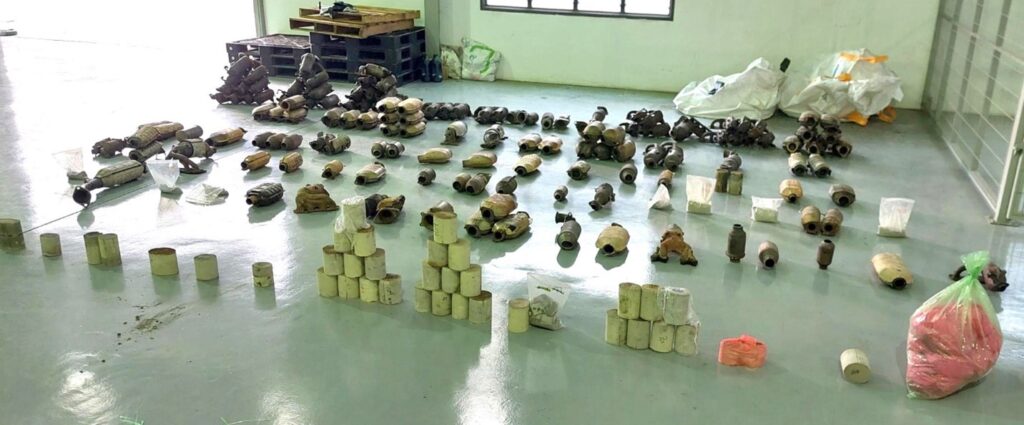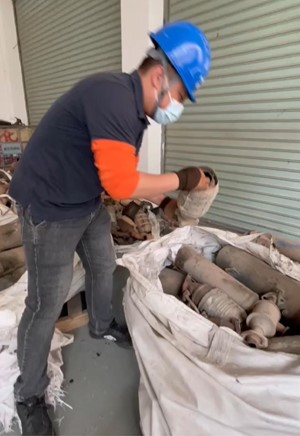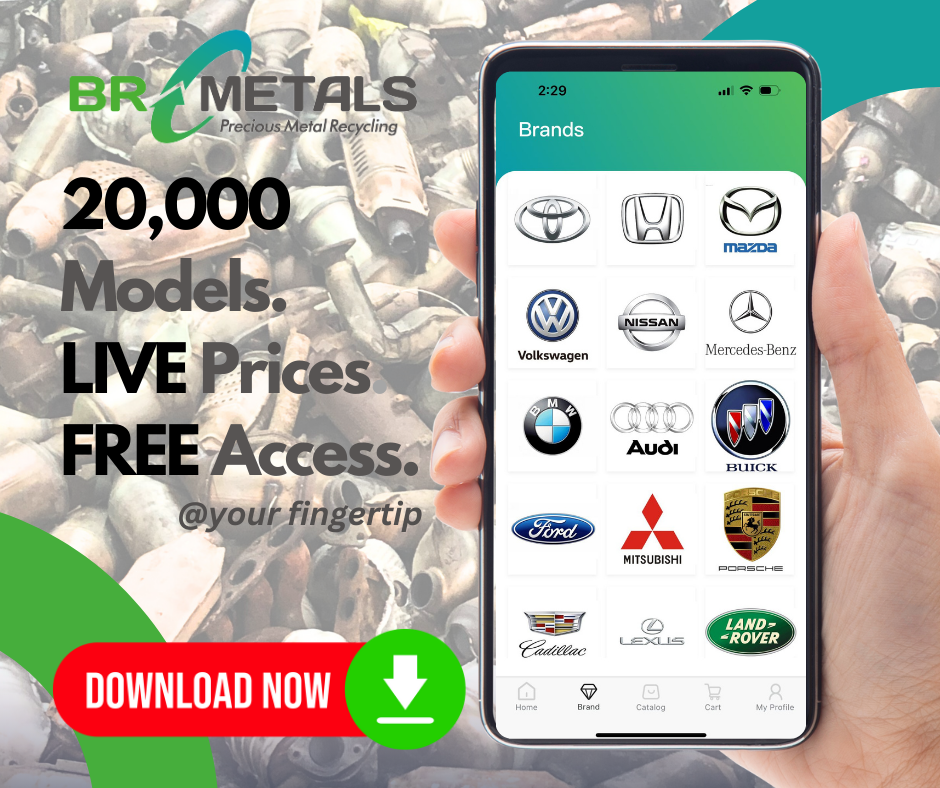How to Identify and Sort Catalytic Converters
Identifying and sorting catalytic converters involves a few steps, as these devices can vary widely in design, composition, and value. Catalytic converters are emissions control devices found in automobiles and other engines, containing precious metals such as platinum, palladium, and rhodium. Here’s a general guide on how to identify and sort them:
- Visual Identification
Outer Shell/ Cover: Catalytic converters come in various shapes and sizes. Some are small and round, while others might be larger and more oval or rectangular. However, the size and shape are poor indicators of the precious metal content within the catalytic converters and their value.

Rather than focusing on the shapes and sizes, most catalytic converters have serial numbers or manufacturer codes stamped on them. These markings are often be used to determine the make, model, and year of the vehicle it came from, as well as the precious metal content.
You can use the markings or serial numbers found on the catalytic converter to look up information in a database or APP. BR Metals will be launching own price APP with more than 20,000 unique makes and models of converters. It will match these numbers to specific vehicles and can give you an idea of the converter’s value based on its potential metal content.
- Type of Catalyst
OEM (Original Equipment Manufacturer) vs. Aftermarket
OEM converters generally contain higher quantities of precious metals compared to aftermarket on
es. Here’s how to tell aftermarket catalytic converters apart from OEM ones:
– Appearance: OEM catalytic converters are generally larger than aftermarket ones because they contain more Platinum Group Metals (PGM).
Instead of a manufacturer logo, aftermarket converters have a silver shield and an arrow on the shield. They also usually have serial numbers beginning with “N”. Some China made ones don’t even have stamps or serial numbers. They are normally lighter than OEM catalytic converters.

Type of Vehicle
Converters from larger engines, such as those found in trucks or SUVs, often contain more precious metal.
Hybrid vs. Non-Hybrid
Hybrid vehicles usually have catalytic converters with different compositions. They are usually smaller but generally have higher concentration of certain PGM.
- Physical Inspection
Honeycomb Material: The honeycomb monolith or ceramic subtract is found inside the catalytic converter, and it can be ceramic or metallic; these materials can affect the value differently. Ceramic converters usually contain more precious metals.
Condition: The external condition can give clues about the internal condition of the catalyst material, although it’s not always indicative of the amount of recoverable precious metals.
- Sorting
After identification, sort the catalytic converters based on type (OEM or aftermarket), and potential value. This can help in recycling them efficiently.
- Use of Technology
Reliable sampling is the basis of accurate analysis for spent catalytic converter recycling. At BR Metals, we continuously innovate and enhance the use of technology to maximise value and deliver better recycling outcomes.
We achieved 6 patents from China’s National Intellectual Property Administration for lab automation and for our automated bulk sampling system that not only improve efficiency and processing time of our bulk sampling process by 15%, but also reduces wastage from human errors by 6%, increasing the accuracy of sample analysis for more clarity and better returns for our customers.
In addition to using X-ray fluorescence (XRF) analyzers, we also use wet chemical analysis by Inductively Coupled Plasma Optical Emission spectroscopy (ICP-OES) to precisely determine the precious metal content of catalytic converters by up to 99.99%. We can do that within 7 business days too so that our customers don’t have long to wait for their payment.
- Legal Considerations
Ensure you’re legally allowed to buy, sell, or recycle catalytic converters. Due to their high value, they are often targeted for theft. Handle with care to avoid releasing any harmful substances contained within the converter.
For precise sorting and valuation, especially if doing this as a part of a recycling business or a similar venture, it might be worthwhile to invest in professional tools like an XRF analyser and access to comprehensive databases. Most importantly, work with a recycling partner that is committed to growing with you by offering value-add service, risk management and market intelligence for you to significantly increase the value of catalytic converters recycling.





